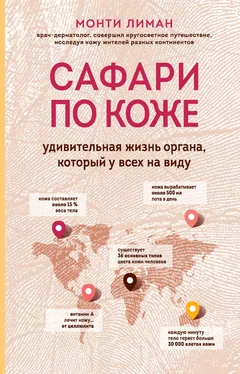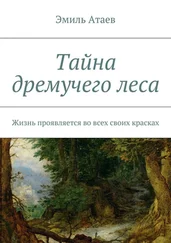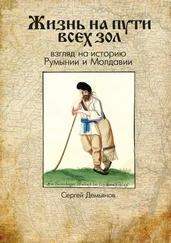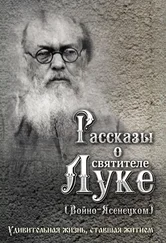Boudreau, M. D., Beland, F. A., Felton, R. P., Fu, P. P., Howard, P. C., Mellick, P. W., Thorn, B. T. and Olson, G. R., ‘Photo-co-carcinogenesis of Topically Applied Retinyl Palmitate in SKH– 1 Hairless Mice’, Photochemistry and Photobiology, 94(4), 2017, pp. 1096–1114
Wang, S. Q., Dusza, S. W. and Lim, H. W., ‘Safety of retinyl palmitate in sunscreens: a critical analysis’, Journal of the American Academy of Dermatology, 63(5), 2010, pp. 903–90
Способность данного фактора (физической, химической, биологической природы) вызывать мутации – изменения генетической структуры клетки, которые в последующем могут вести к процессу развития опухоли.
Watson, R. E. B., Ogden, S., Cotterell, L. F., Bowden, J. J., Bastrilles, J. Y., Long, S. P. and Griffiths, C. E.M., ‘A cosmetic “anti-ageing” product improves photoaged skin: a double-blind, randomized controlled trial’, British Journal of Dermatology, 161(2), 2009, pp. 419–26
Van Ermengem, É., ‘A new anaerobic bacillus and its relation to botulism’, Reviews of Infectious Diseases, 1(4), 1979, pp. 701–19
Carruthers, J. D. and Carruthers, J. A., ‘Treatment of glabellar frown lines with C. botulinum-A exotoxin’, Journal of Dermatologic Surgery and Oncology,18(1), 1992, pp. 17–21
Yu, B., Kang, S. Y., Akthakul, A., Ramadurai, N., Pilkenton, M., Patel, A., Nashat, A., Anderson, D. G., Sakamoto, F. H., Gilchrest, B. A. and Anderson, R. R., ‘An elastic second skin’, Nature Materials, 15(8), 2016. p.911–18
Abraira, V. E. and Ginty, D. D., ‘The sensory neurons of touch’, Neuron, 79(4), 2013. pp. 618–39
Механорецепторы в коже позвоночных, необходимые для улавливания прикосновений.
Woo, S. H., Ranade, S., Weyer, A. D., Dubin, A. E., Baba, Y., Qiu, Z., Petrus, M., Miyamoto, T., Reddy, K., Lumpkin, E. A. and Stucky, C.L., ‘Piezo2 is required for Merkel-cell mechanotransduction’, Nature, 509, 2014, pp. 622–6
Penfield, W., and Jasper, H., ‘Epilepsy and the functional anatomy of the human brain’, Little, Brown, 1954
Cohen, L. G., Celnik, P., Pascual-Leone, A., Corwell, B., Faiz, L., Dambrosia, J., Honda, M., Sadato, N., Gerloff, C., Catalá, M. D. and Hallett, M., ‘Functional relevance of cross-modal plasticity in blind humans’, Nature, 389, 1997, pp. 180–83
Ro, T., Farnè, A., Johnson, R. M., Wedeen, V., Chu, Z., Wang, Z. J., Hunter, J. V. and Beauchamp, M. S., ‘Feeling sounds after a thalamic lesion’, Annals of Neurology, 62(5), 2007, pp. 433–41
Changizi, M., Weber, R., Kotecha, R. and Palazzo, J., ‘Are wet-induced wrinkled fingers primate rain treads?’ Brain, Behavior and Evolution, 77(4), 2011, pp. 286–90
Kareklas, K., Nettle, D. and Smulders, T. V., ‘Water-induced finger wrinkles improve handling of wet objects’, Biology Letters, 9(2), 2013, p.20120999
Haseleu, J., Omerbašić, D., Frenzel, H., Gross, M. and Lewin, G. R., ‘Water-induced finger wrinkles do not affect touch acuity or dexterity in handling wet objects’, PLOS ONE, 9(1), 2014, p.e84949
Hertenstein, M. J., Holmes, R., McCullough, M. and Keltner, D., ‘The communication of emotion via touch’, Emotion, 9(4), 2009, p.566
Liljencrantz, J. and Olausson, H., ‘Tactile C fibers and their contributions to pleasant sensations and to tactile allodynia’, Frontiers in Behavioral Neuroscience, 8, 2014
Brauer, J., Xiao, Y., Poulain, T., Friederici, A. D. and Schirmer, A., ‘Frequency of maternal touch predicts resting activity and connectivity of the developing social brain’, Cerebral Cortex, 26(8), 2016, pp. 3544–52
Walker, S. C., Trotter, P. D., Woods, A. and McGlone, F., ‘Vicarious ratings of social touch reflect the anatomical distribution & velocity tuning of Ctactile afferents: a hedonic homunculus?’, Behavioural Brain Research, 320, 2017, pp. 91–6
Suvilehto, J. T., Glerean, E., Dunbar, R. I., Hari, R. and Nummenmaa, L., ‘Topography of social touching depends on emotional bonds between humans’, Proceedings of the National Academy of Sciences, 112(45), 2015, pp. 13811–6
van Stralen, H. E., van Zandvoort, M. J., Hoppenbrouwers, S. S., Vissers, L. M., Kappelle, L. J. and Dijkerman, H. C., ‘Affective touch modulates the rubber hand illusion’, Cognition, 131(1), 2014, pp. 147–58
Blakemore, S. J., Wolpert, D. M. and Frith, C. D., ‘Central cancellation of self-produced tickle sensation’, Nature Neuroscience, 1(7), 1998, pp. 635–40
Linden, D. J., Touch: The Science of Hand, Heart and Mind, Penguin, 2016
Cox, J. J., Reimann, F., Nicholas, A. K., Thornton, G., Roberts, E., Springell, K., Karbani, G., Jafri, H., Mannan, J., Raashid, Y. and Al-Gazali, L., ‘An SCN9A channelopathy causes congenital inability to experience pain’, Nature, 444,2006, pp. 894–8
Аномалия восприятия болевых ощущений, проявляющаяся в том, что человек, сохранивший нормальную болевую чувствительность, оказывается безразличным к боли.
Заболевание вирусной природы, характеризующееся односторонними герпетиформными высыпаниями на коже с сильным болевым синдромом. Возбудитель – вирус ветряной оспы.
Заболевание, возникающее в результате поражения корешков нервов вирусом опоясывающего герпеса.
Вид боли, который, в отличие от обычной боли, возникает не вследствие реакции на физическое повреждение, а в результате патологического возбуждения нейронов в периферической или центральной нервной системе, отвечающих за реакцию на физическое повреждение организма (обычную боль).
Andresen, T., Lunden, D., Drewes, A. M. and Arendt-Nielsen, L., Pain sensitivity and experimentally induced sensitisation in red haired females’, Scandinavian Journal of Pain, 2(1), 2011, pp. 3–6
‘Paget, Henry William, first Marquis of Anglesey (1768–1854)’, Oxford Dictionary of National Biography, Oxford University Press, 2004 (online edition).
Titus Lucretius Carus, Lucretius: The Nature of Things, Jenkyns, R., trans. Stallings, A. E., Penguin Classics, 2007
Читать дальше
Конец ознакомительного отрывка
Купить книгу












